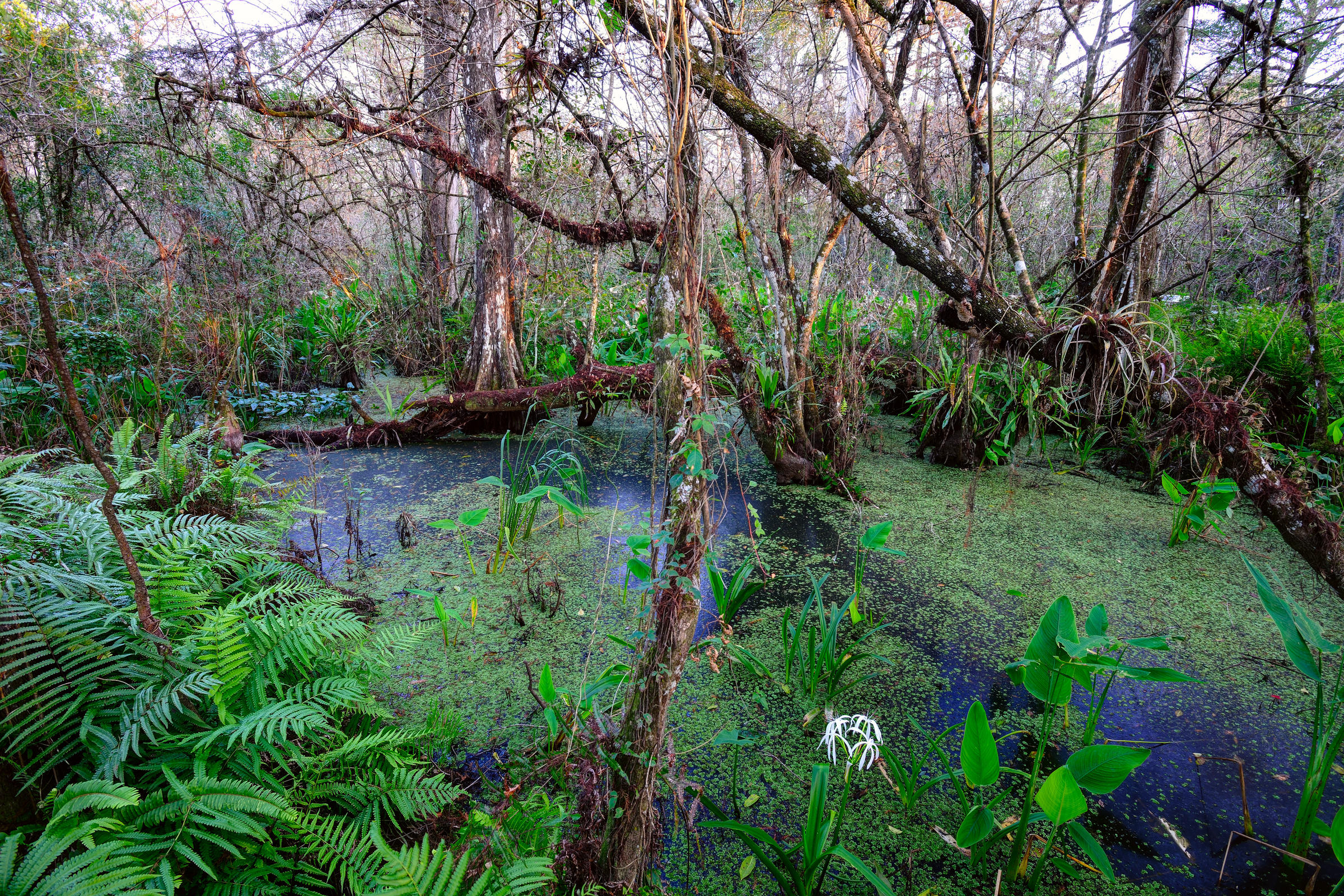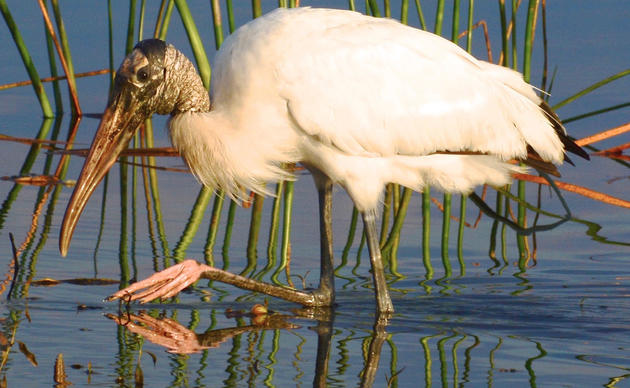Daily water level monitoring began at Corkscrew Swamp Sanctuary in the late 1950s when there had been relatively few hydrologic alterations in our watershed. Agricultural and residential development have since come to dominate the watershed, and a 55-year-long monitoring record has detected substantial changes in the swamp’s hydrology.
Despite no change in rainfall, our research team found significant changes in dry season water levels. We saw no change in the timing or magnitude of peak wet season conditions or in the hydroperiods of upland habitats (hammock forests and pine forests) or wet prairies. However, we found that hydroperiods have decreased 41% in marshes, 27% in bald cypress, and 23% in pond habitats, with the most notable change occurring between the 1990s and 2000s. The frequency of dry down at Corkscrew’s Lettuce Lakes increased from 22% of years WY1960-1999 to 81% of years WY2000-2015, with the duration of dry down increasing 41%.
This finding has significant implications for the health of our native wetlands and wildlife, risk of wildfire throughout our region, and ultimately for the availability of clean drinking water for Southwest Florida residents.
Details on the initial finding and a discussion of possible causes and implications can be found in our research report (below). New findings were published in 2021 and details can be found on this page.
Clem, SE & MJ Duever. 2018. Recent hydrologic change at Audubon's Corkscrew Swamp Sanctuary. Audubon Florida Research Report, 14 pp.
How you can help, right now
Donate to Protect Corkscrew's Birds and Wetlands
Make a meaningful and lasting gift to protect Corkscrew Swamp Sanctuary's rare Everglades habitat.
Become a Member
Join an extraordinary and growing community of members dedicated to supporting the conservation of natural ecosystems throughout the Western Everglades.
Sign Up for the Corkscrew eNewsletter
Stay connected to Corkscrew Swamp. Sign up for our monthly online newsletter.





